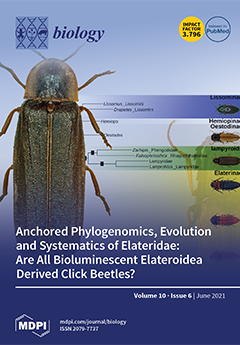In the city of Maputo, Mozambique, food and water are often sold on the streets. Street water is packaged, distributed, and sold not paying attention to good hygienic practices, and its consumption is often associated with the occurrence of diarrheal diseases. Coincidentally, the
[...] Read more.
In the city of Maputo, Mozambique, food and water are often sold on the streets. Street water is packaged, distributed, and sold not paying attention to good hygienic practices, and its consumption is often associated with the occurrence of diarrheal diseases. Coincidentally, the increase of diarrheal diseases promotes the inappropriate use of antibiotics that might cause the emergence of antibiotic-resistant bacterial strains. In this context, the present study aimed to assess the microbiological quality of water sold on the streets of Maputo, as well as the antibiotic resistance profile of selected Enterobacteriaceae isolates. The 118 water samples analyzed were from street home-bottled water (
n = 81), municipal water distribution systems (tap water) (
n = 25), and selected supply wells in several neighborhoods (
n = 12). The samples were analyzed for total mesophilic microorganisms, fecal enterococci, fecal coliforms,
Escherichia coli, and
Vibrio spp. The results showed a high level of fecal contamination in all types of water samples. In home-bottled water, fecal coliforms were found in 88% of the samples, and
E. coli in 66% of the samples. In tap water, fecal coliforms were found in 64%, and
E. coli in 28% of the samples. In water from supply wells, fecal coliforms and
E. coli were found in 83% of the samples. From 33 presumptive
Vibrio spp. colonies, only three were identified as
V. fluvialis. The remaining isolates belonged to
Aeromonas spp. (
n = 14) and
Klebsiella spp. (
n = 16). Of 44 selected Enterobacteriaceae isolates from water samples (28 isolates of
E. coli and 16 isolates of
Klebsiella spp.), 45.5% were not susceptible to the beta-lactams ampicillin and imipenem, 43.2% to amoxicillin, and 31.8% to amoxicillin/clavulanic acid. Regarding non-beta-lactam antibiotics, there was a high percentage of isolates with tolerance to tetracycline (52.3%) and azithromycin (31.8%). In conclusion, water in Maputo represents a risk for human health due to its high fecal contamination. This situation is made more serious by the fact that a relatively high percentage of isolates with multidrug resistance (40%) were found among Enterobacteriaceae. The dissemination of these results can raise awareness of the urgent need to reduce water contamination in Maputo and other cities in Mozambique.
Full article






